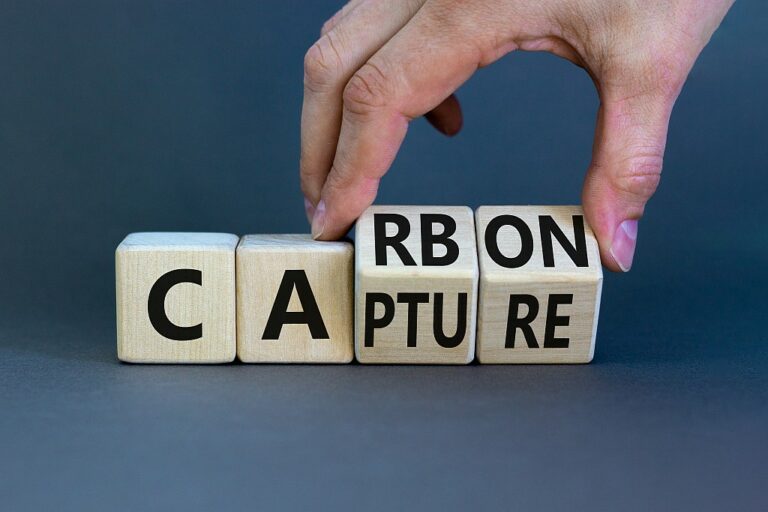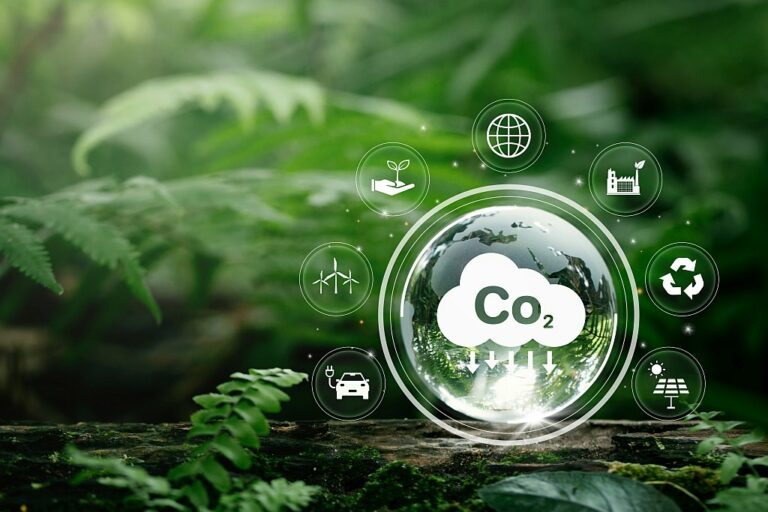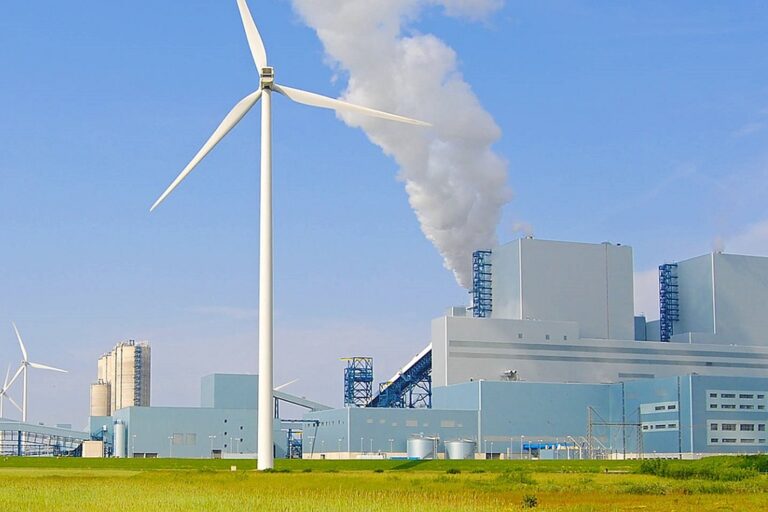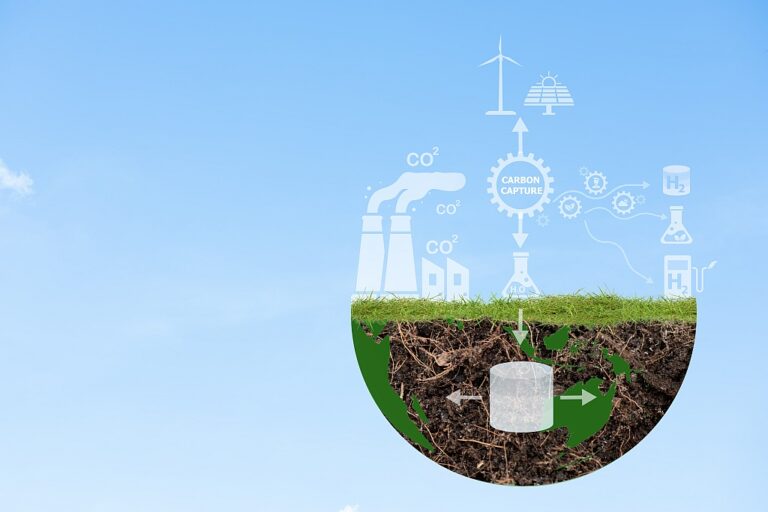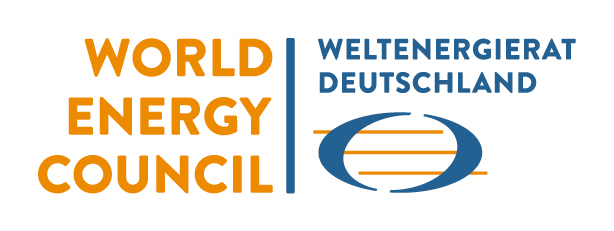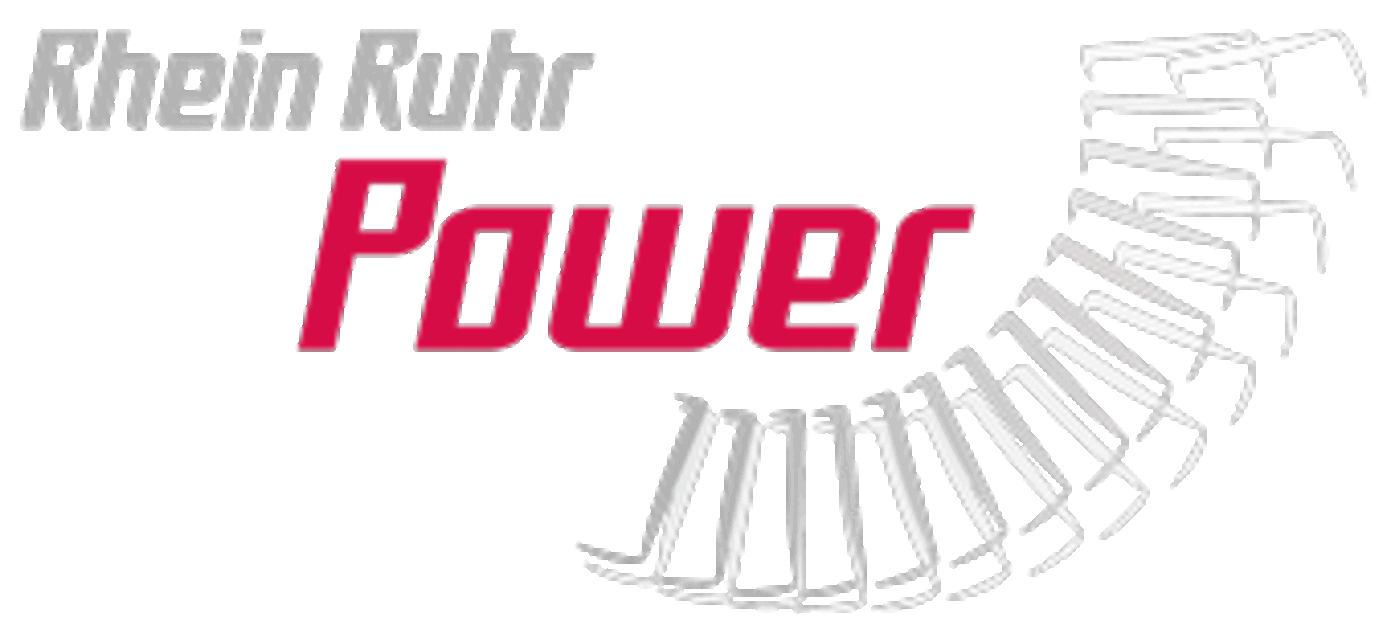Carbon Capture Technology
To achieve greenhouse gas neutrality as outlined in the Paris Agreement, emissions have to be balanced with natural or technical CO₂ sinks by the second half of this century. Three main strategies support this goal:
- Avoiding emissions by reducing consumption and emission-causing activities,
- Substituting carbon-intensive technologies with low- or zero-emission alternatives,
- Removing CO₂ from the atmosphere by creating effective carbon sinks.
In discussions around global warming, carbon dioxide (CO₂) is recognised as the most significant greenhouse gas. To reduce CO₂ emissions, it is essential to adopt technologies with higher energy efficiency and to expand the use of renewable energy sources. In addition to these measures, technologies for the capture and long-term storage of CO₂ – known as Carbon Capture and Storage (CCS) – are also being explored.
An alternative to CCS is Carbon Capture and Utilisation (CCU). Rather than viewing CO₂ solely as a harmful emission, CCU considers it a valuable raw material that can be captured and used in industrial processes. While some CCU technologies, such as methanol or Fischer Tropsch synthesis, have already reached a high level of technological maturity (TRL ≥ 8), other approaches are still at an early stage of development. In the long term, however, these technologies may play an important role in the CO₂ cycle.
CCUS technologies are of particular interest to energy-intensive industries with high CO₂ emissions, such as the steel, cement, and lime sectors, as well as power and combined heat and power plants, paper mills, and chemical production facilities.
So far, the use of CO₂ has not been fully regulated at either the European or national level. However, the German Federal Ministry for Economic Affairs and Climate Action (BMWK) has published a key issues paper on a carbon management strategy (February 2024). It outlines potential areas of application for CCU and CCS, along with proposals for legal and economic frameworks – ideally aligned with European and international standards – to support the successful development of a CCUS industry.

Permanent storage of CO2
The aim of underground carbon dioxide (CO₂) storage is to reduce emissions into the atmosphere. The captured CO₂ may originate from a variety of sources, as outlined above. Potential storage options include partially or fully depleted oil and gas reservoirs, as well as deep saline aquifers. Storage can take place both onshore and beneath the seabed.
A key challenge in the development of CCS projects is the establishment of a suitable CO₂ infrastructure – a particularly pressing issue in Europe. Long planning and permitting procedures, incomplete regulatory frameworks, and public concerns regarding pipelines and onshore storage facilities all contribute to increased costs and project risks. Large-scale pilot projects for CO₂ storage not only raise public awareness, but also help to build and expand expertise in the design, implementation, and safe operation of such facilities.
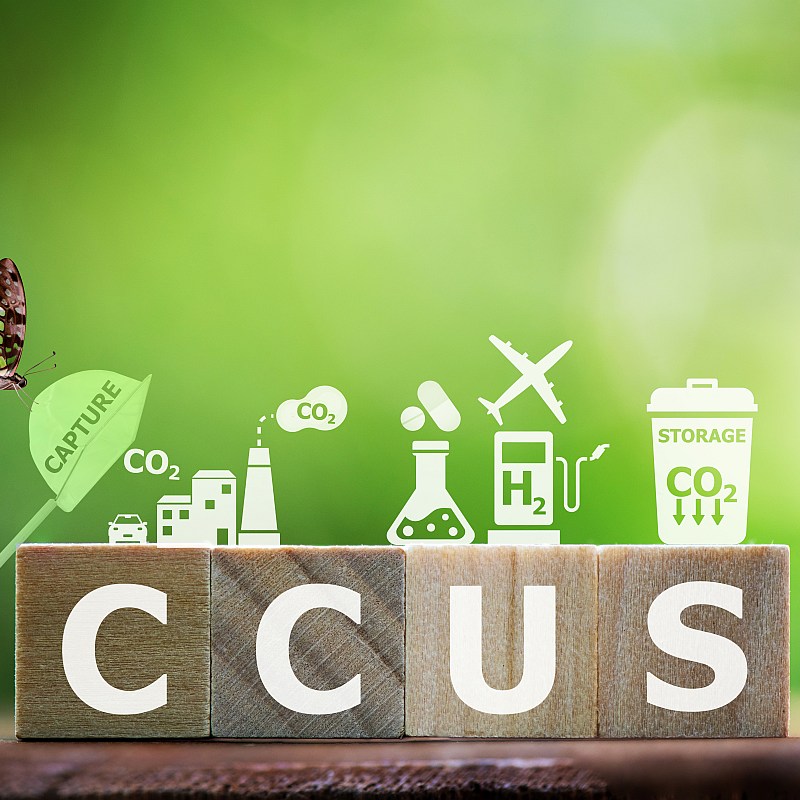
CO2 as a raw material
In the long run, extensive carbon capture and utilisation (CCU) measures will be essential to bridge the gap. This will require the extraction of substantial volumes of carbon directly from the atmosphere or from unavoidable emission sources. Carbon capture plants are already being constructed and operated today. In parallel, the use of captured CO₂ as a feedstock for the chemical industry or for the production of e-fuels has been the subject of research for some time. To enable a circular carbon economy within a defossilised system, the availability and continued technical development of CCU technologies — along with the energy required to power them — must be secured.
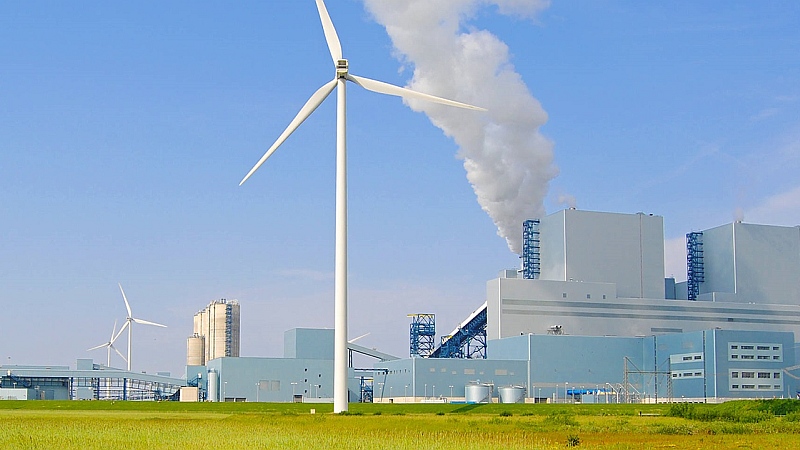
Power plant technologies with CO2 capture
Currently, three main CO₂ capture processes are available, each differing in terms of technological implementation and potential applications:
In the oxyfuel process, combustion takes place using pure oxygen instead of air. As a result, the flue gas mainly consists of CO₂ and water vapour, significantly simplifying CO₂ capture. This process is compatible with fossil fuels, biomass, and waste. However, it is not yet economically viable and is currently limited to pilot projects.
Emerging carbon capture technologies:
Membrane-based processes use special materials that selectively allow CO₂ to pass through while retaining other gases like nitrogen and oxygen. This process depends on the solubility and diffusion properties of the gases. It is ideal for gas streams with low to medium CO₂ concentrations.
Several types of membranes are currently under development, and the technology is being tested in pilot plants.
Also known as the dry sorption process, carbonate looping is a post-combustion method based on the reversible chemical reaction between calcium oxide (CaO) and CO₂ to form calcium carbonate (CaCO₃). In a carbonator, CO₂ reacts with CaO and is captured as CaCO₃. This compound is then heated in a calciner to release pure CO₂ and regenerate CaO for reuse. The process is relatively energy-efficient and can be integrated into existing power plants.
Direct air capture (DAC) involves filtering CO₂ directly from the ambient air. The air is drawn into a system and passed through a chemical filter.
Two main variants exist:
- Solid adsorbents, which bind CO₂ at temperatures of 80 to 120 °C
- Liquid solvents, which operate at significantly higher temperatures of 300 to 900 °C.
Activities
The exchange of experience and, in particular, the development of practical solutions for the application of CCUS technologies are among the core tasks of our association’s work.
vgbe has previously contributed to the ZERO EMISSIONS PLATFORM (ZEP), a European initiative established in 2005 to promote the deployment of CCUS. ZEP brings together experts from diverse disciplines to develop technical, economic and policy strategies aimed at reducing greenhouse gas emissions through CCUS technologies. Its overarching goal is to support the achievement of EU climate objectives and to advance CCUS as a vital component of a sustainable energy future.
Drawing on the experience gained through this platform, vgbe plays a key role in advising and supporting its members in the selection, design and optimisation of CCUS systems, while also addressing emerging environmental and strategic challenges.
vgbe focuses on the following key areas:
- Selection and design of structural and technical systems
- Development of concepts for optimised operation and maintenance
- Enhancement of availability, reliability and safety
- Support of a cost-effective life cycle and environmental management
- Initiation of research projects on interesting future topics
- Presentation of positions to European and national regulations
The vgbe-Standards reflect the state of the art for the generation and storage of electricity and heat. They are developed in close cooperation with operators and manufacturers.
Anwendungsbereiche sind u.a.:
- Layout, design and planning
- Purchasing and manufacturing
- Construction and commissioning
- Operation and maintenance
- Dismantling and recycling
For ordinary vgbe members, the subscription to the vgbe-Standards in electronic form (ebook) is included in the membership fee. Affiliated and sponsoring vgbe members receive the vgbe-Standards at reduced rates.
Overview of all vgbe-Standards can be found in the media catalogue!
To meet new challenges, vgbe energy offers collaborative research activities in which operators as well as manufacturers, universities, research institutes and the public sector pool their specific know-how and financial resources. This includes initiating and coordinating national and international research projects as well as building up know-how and knowledge.
vgbe energy organises topic-specific Expert Workshops to promote the exchange and problem-solving between experts at the highest technical level.
The Expert Workshops are planned by vgbe energy in co-operation with its members and cover a wide range of applications, including established and new technologies for energy generation and storage. They can be organised at short notice and can therefore not only address pressing issues in the industry, but can also be used proactively to find solutions to upcoming challenges. A key feature of the Expert Workshops is the policy of “give and take”.
vgbe energy with its leading role in understanding good and best practices in operation and development launches different Technical Programmes in cooperation with its members. These programmes are part of the comprehensive activities of vgbe energy for the future energy sector to support the daily work in operation, maintenance and plant optimisation as well as in techno-economic and environmental challenges. Therefore, the programmes are open for vgbe members as well as vgbe non-members.
Technical Competence Center „Future Energy System“
The Technical Committee “Carbon Capture, Utilisation and Storage” is part of our Technical Competence Center (TCC) “Future Energy System”. The TCC is to create an interest and communication platform for companies involved in the promotion, implementation and operation of future technologies in industry and the energy sector.
Get an overview!
Get in touch
We are looking forward to inform you
Our team
Sebastian Zimmerling
Head of Future Energy System
Agnes Goeritz
Assistant Future Energy System
